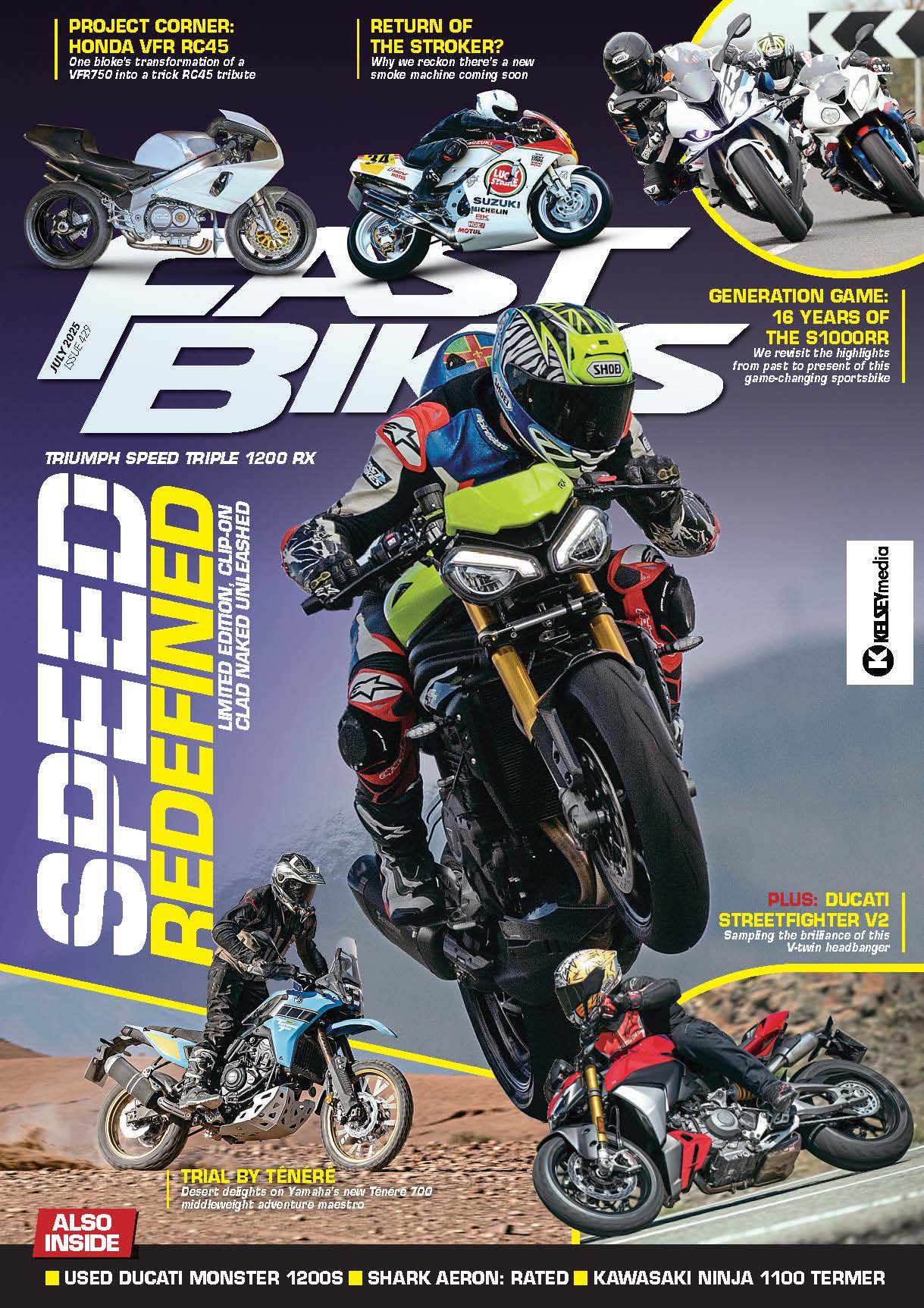During its third update, BMW made its class-leading sportsbike more compliant.
Words: Jon Urry Pics: Mortons Archive
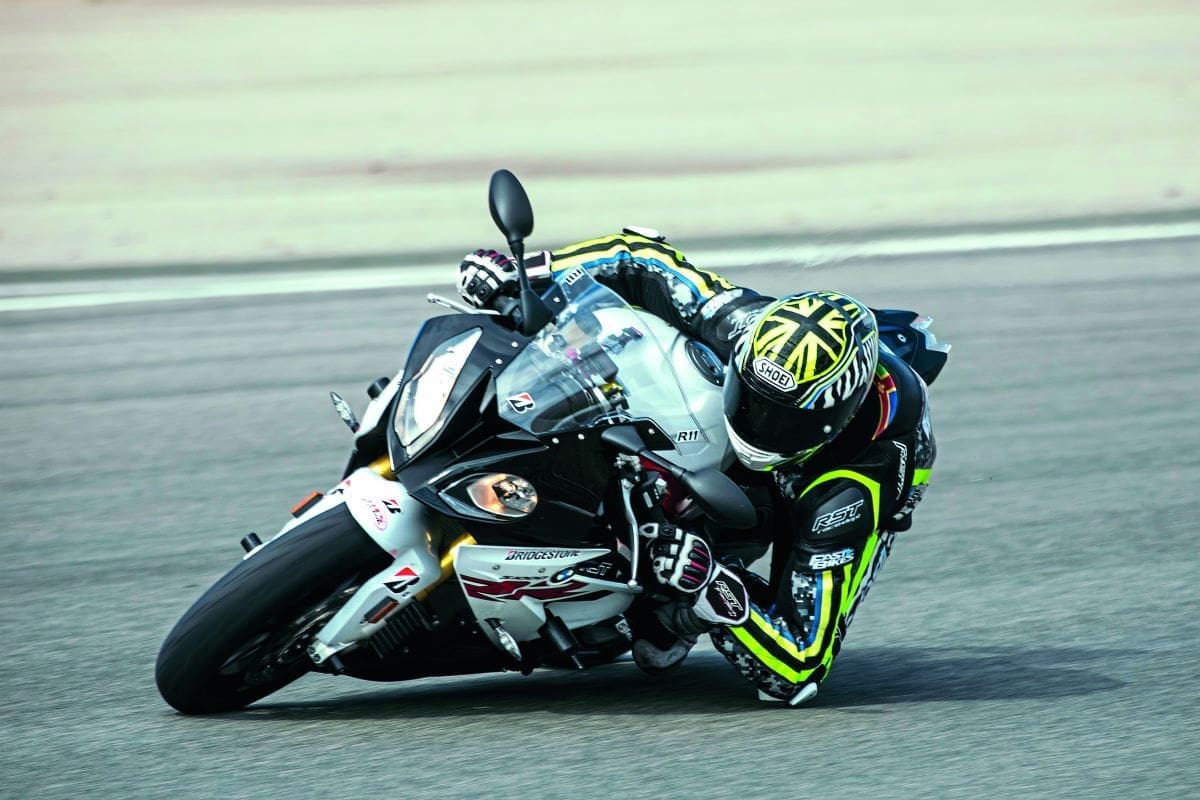
There is a well-trodden path when it comes to litre sportsbike development which every manufacturer seems to inadvertently follow. The first generation is always a bit wild and unruly as they over-step the mark to create an instant impression. Two years later, the manufacturer tries to rein in their beast through small chassis calming modifications. Finally, in its third generation, they hit the magic formula and release a bike with a near-perfect blend of performance and user-friendliness. And then they release an all-new model and start the cycle again…
It happened with Yamaha (the YZF-R1 5PW is superb), Kawasaki (the 2008 Ninja ZX-10R is the best of the early models) and Suzuki (the GSX-R1000 K5 is near-perfect), and in 2015 BMW followed suit with the third generation of its S1000RR. If you are after a modern litre sportsbike with its eye on road riders rather than track fiends, this is a fantastic option. So, what did Motorrad do to make it so good?
Starting with the motor, BMW managed to not only extract more peak performance (a claimed 6bhp), but it also refined the RR’s torque delivery as lots of low and midrange drive is the bit that road riders appreciate and use the most. This was achieved via a redesigned head with a new intake cam, lighter valves, and an altered fuelling system with a revised (and surprisingly loud as standard…) exhaust system and optimised riding modes. Not major changes but effective ones – in a good way.
Still utterly rampant at any throttle opening thanks to a genuine 188bhp with 112Nm of torque, this generation of RR’s inline-four feels like it could be a big-bore in comparison to the older generations’ motors – and it does so without ShiftCam.
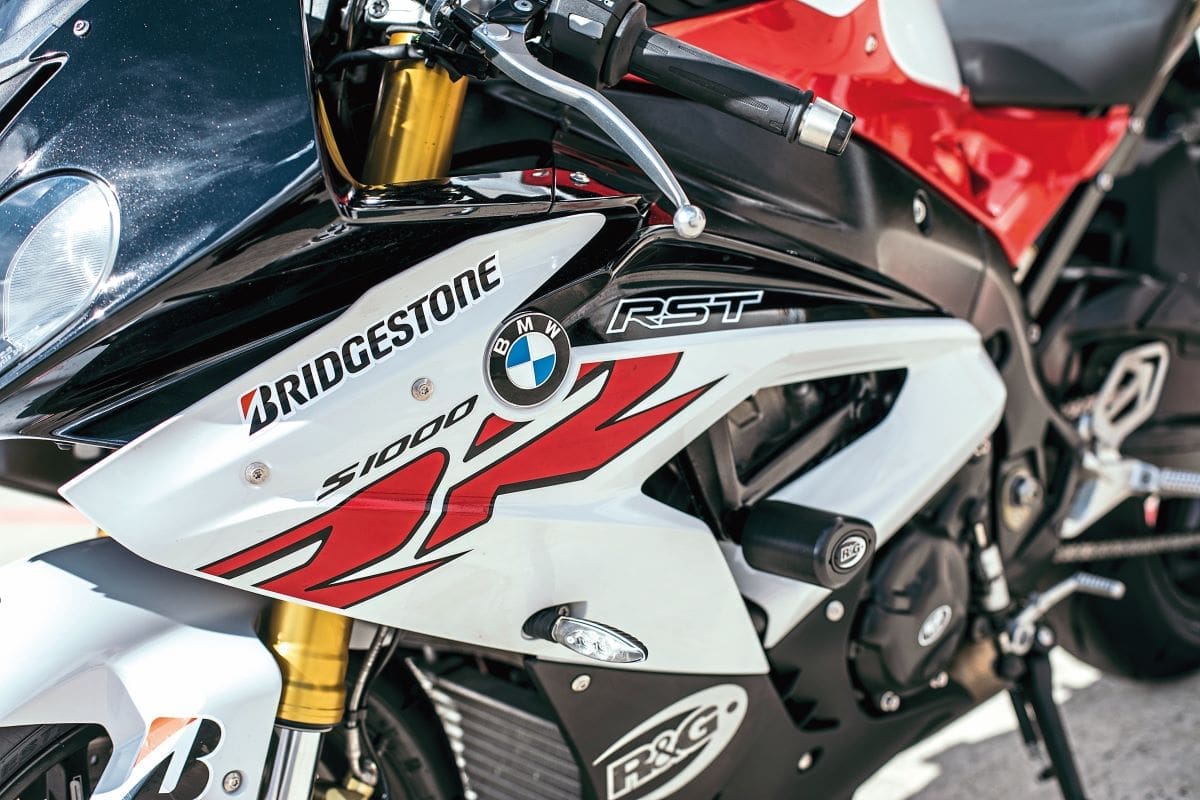
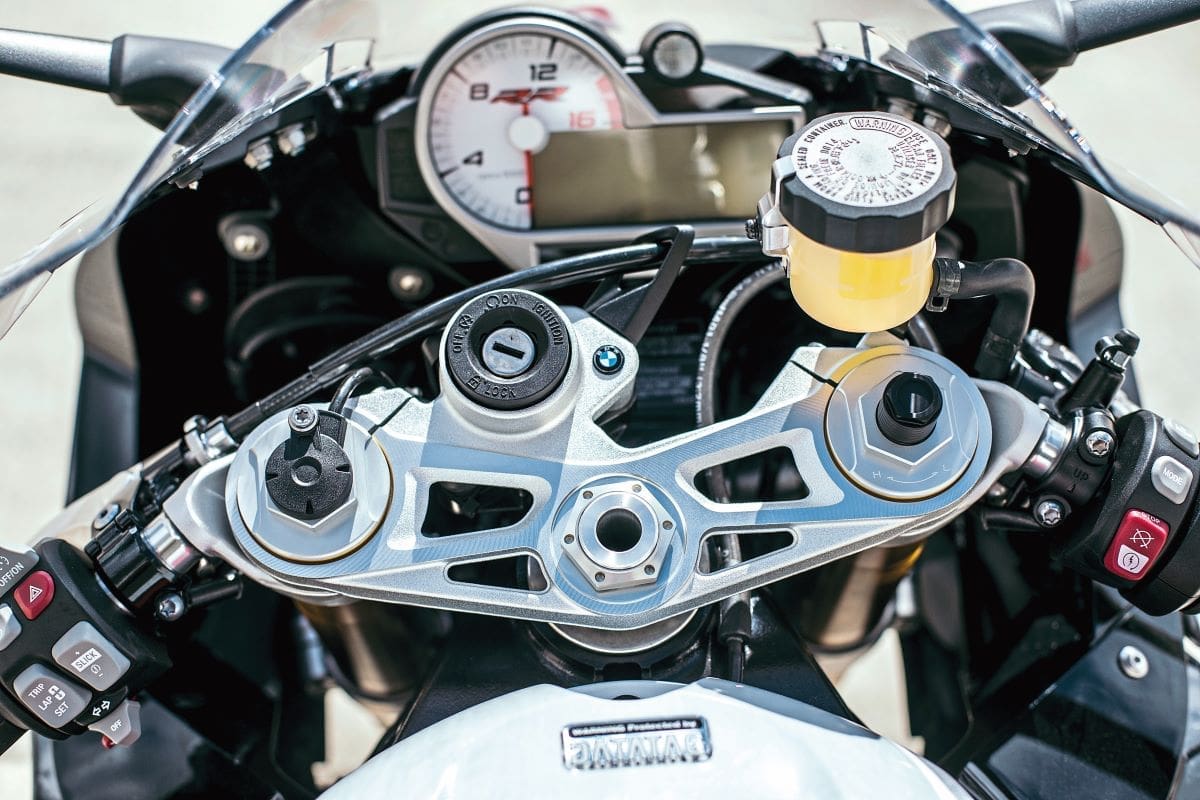
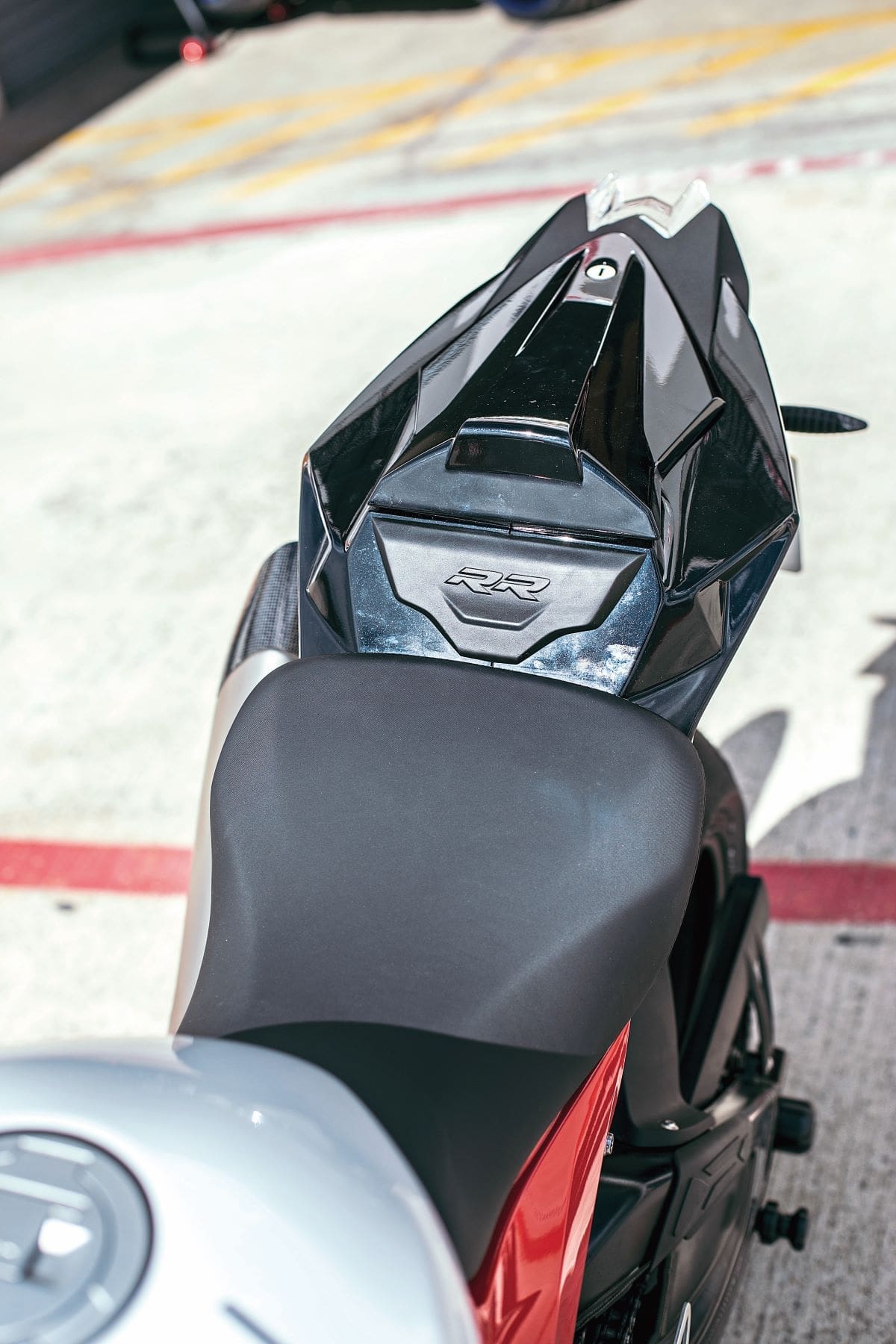
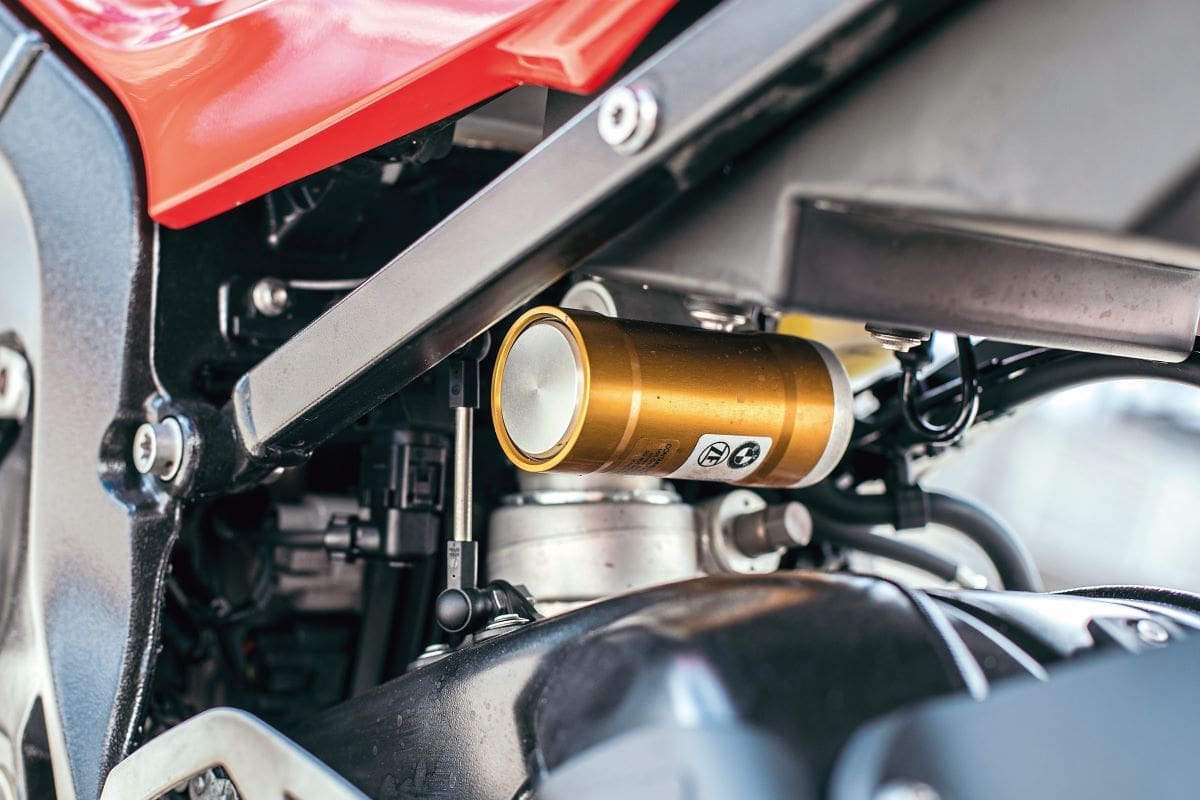
Dispensing copious amounts of bottom-end shove, its drive builds into a surge of midrange before charging towards its redline with blisteringly fast acceleration. But it’s not overwhelmingly fast (unless you want it to be…) as thanks to a light and incredibly precise throttle action, you can easily meter out exactly the right amount of performance for your current demands. On the road, this precision means you can ride faster and with more confidence when it comes to unleashing the RR’s staggering performance – a sensation helped by its updated electronics package and new chassis.
As with the motor, BMW made a very deliberate decision to engineer in as much compliance to its RR as possible without dulling its sporty edge. The new frame is not only lighter than before, but it has refined geometry with a 0.5-degree increase in head angle, 1.5mm shorter wheel castor, 3mm lower swingarm pivot and 8mm longer wheelbase, all of which makes it more precise with greater feedback. Add to this the latest generation of BMW’s semi-active Dynamic Damping Control (DDC) suspension making its debut on the S1000RR (an optional extra, but 99% of RRs have it fitted) and it all results in a bike that feels incredibly connected to the road and is a doddle to ride at any speed.
Compared to something like an Aprilia RSV4, the BMW is a cuddly teddy bear that, as well as having a pleasingly roomy riding position, even comes with the option of heated grips and cruise control. But don’t think this makes it soft – far from it. The RR is still more than capable on track and its user-friendliness works in your favour in either a track or road environment to build both confidence and speed. As does its electronics.
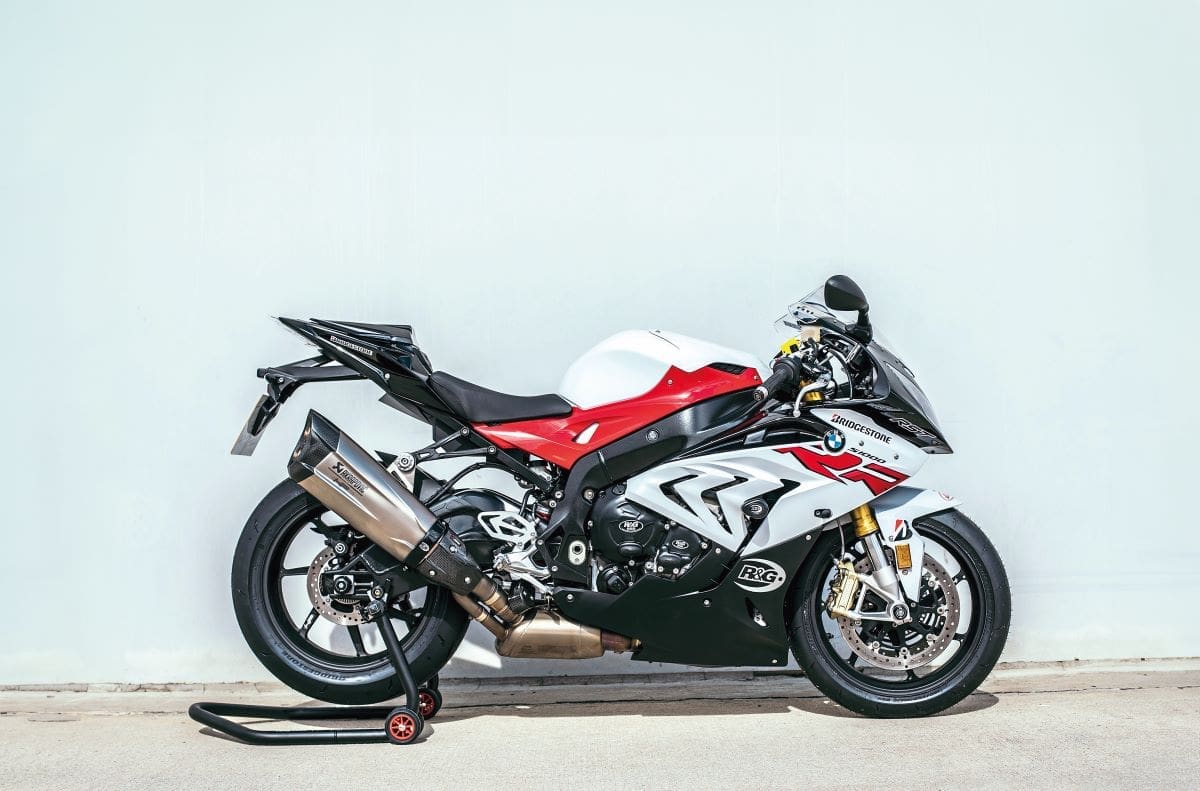
Alongside the three standard riding modes (rain, sport and track), the 2015 RR comes with ASC (BMW’s basic traction control system); however, just as with DDC in the dynamic package, most owners tick the race package to up this spec to dynamic traction control (DTC) with its angle-responsive function, as well as adding sport and race power modes. An incredibly impressive array of electronics, DTC has seven levels of interference, and when you swap between the riding modes, the whole bike’s character changes as everything – including DDC – is seamlessly interlinked. And race ABS, which pleasingly is standard fitment, can also be relied upon with confidence.
It’s almost unbelievable to think that the 2015 S1000RR is now entering its 10th year because it still feels and responds very much like a modern litre sportsbike. Yes, compared to the latest and greatest it lacks wings, its dash doesn’t feature connectivity, and there are a few bits of electronic trickery that aren’t quite as seamless as nowadays, but if you have a budget of £10,000 you can pick up a superb example of this generation of RR and never, ever, feel like you are riding an out-of-date sportsbike. In fact, you can ride it home safe in the knowledge that you have bought one of the best modern litre bikes around, both in terms of its track ability and its road manners. What more could you ask for?
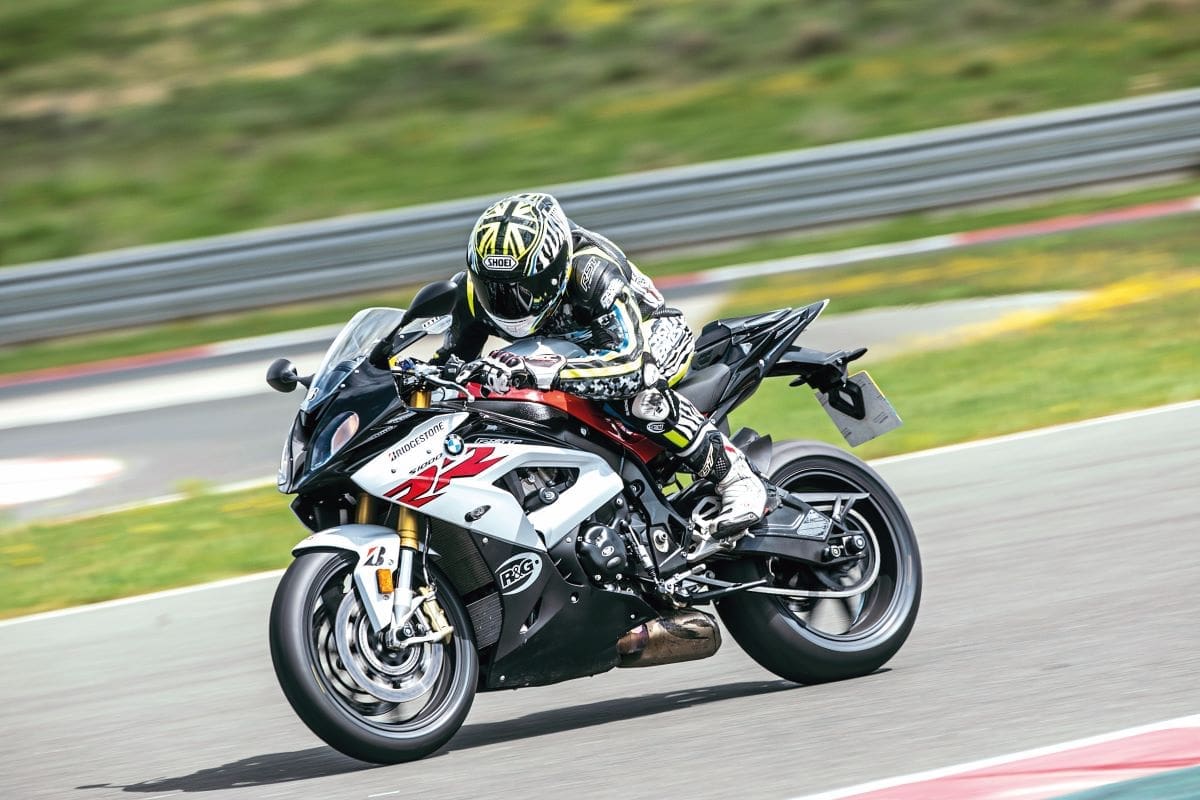
Older generations
The original RR was released in 2010 and upgraded in 2012 through a revised chassis, slightly altered look, and a few new electronic gizmos. The engine remained virtually untouched, with power and torque unchanged. The 2012 HP4 arrived in late 2012 and introduced semi-active suspension, uprated electronics (including a pit lane speed limiter), Brembo brakes, lightweight wheels and more.
Service intervals
The RR has 6000-mile service intervals, the 18,000-mile service being the expensive one as it includes the valve clearances and (if you go by the book…) a fork oil change alongside spark plugs, filters and so on. That’s a bill of more than £800.
Brake fluid
BMW recommends that the RR’s brake fluid is changed every two years, which is important to do as any contamination in the system can lead to the ABS system’s hardware developing issues. It’s not really a job you can do at home due to the complicated ABS system, so check when it was last changed.
Slick shifting
If the quickshifter isn’t very precise, just check the bike has the latest software installed and that the linkages are set up correctly.
Switchgear
A common issue it seems on all BMW models is faulty switchgear. On the RR, the left-hand cluster appears to be the weak point, so check all is working. Some owners have also experienced issues with the ignition key and immobiliser system, so turn the bike on and off a few times to be sure all is well.
Optional extras – electrical
The RR comes with a lot as standard; however, the race package (pro riding modes, DTC, cruise control) and dynamic package (DDC, HP quickshifter, heated grips) are optional extras. While some can be retro-fitted (heated grips, quickshifter and so on), DDC cannot, so check the bike’s spec before buying. Slick and user pro riding modes require an additional underseat dongle to activate, which also unlocks launch control and a pit lane speed limiter.
HP Parts
BMW sold its own range of HP Parts for the RR, which include carbon panels, stubby levers, forged wheels and so on. These do add value to a used bike, with the lightweight HP wheels especially beneficial to the RR’s handling.
Exhaust
The BMW-approved Akrapovic sports silencer is road-legal; however, many owners fit louder options. If you are planning on taking the bike on track, always consider just how loud the pipe is. While the bike will automatically correct its fuelling to suit, getting it set up professionally by a competent dyno house is always a clever idea and gives better results.
Track bikes
Seeing an RR on a trackday isn’t uncommon, so check its MoT history for a clue as to if it has been used as a trackday bike. If the MoT history has gaps but the bike’s mileage has gone up, you need to ask why. Track bikes are obviously best avoided!
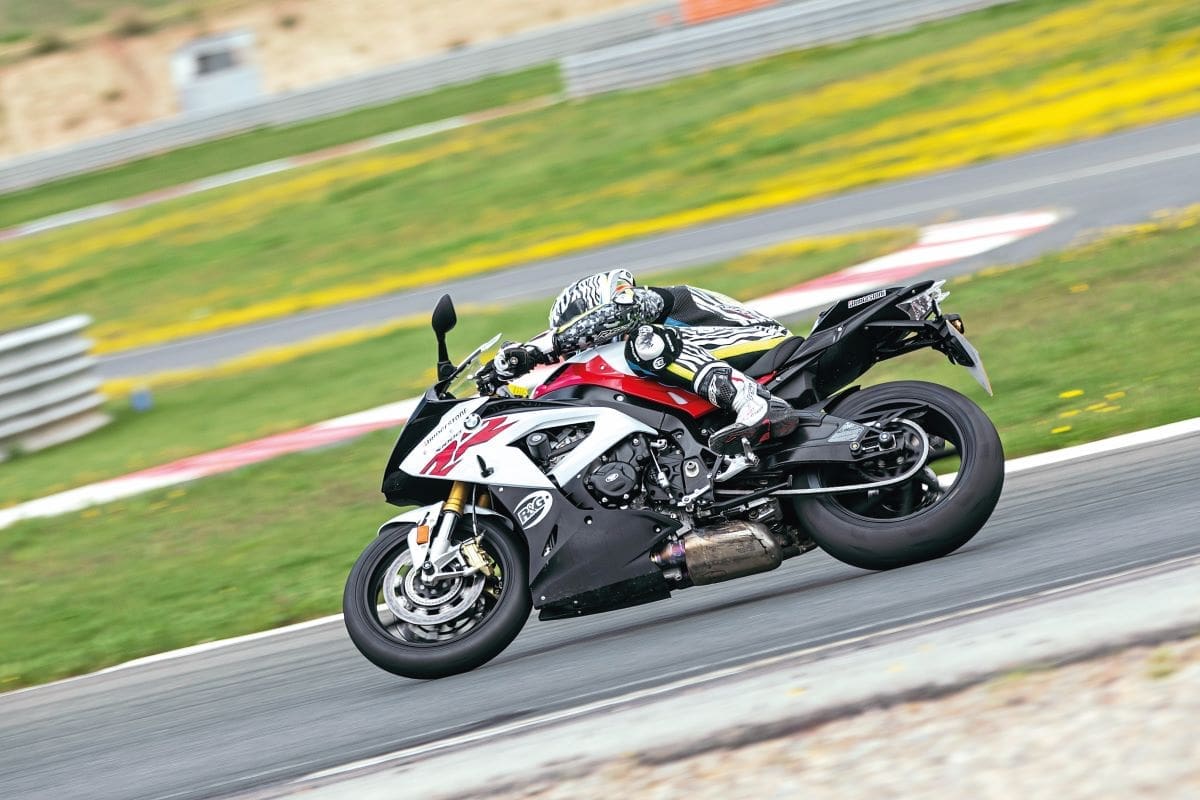
Price guide: £8000-£11,500
Cheapest private: £8000
22,500 miles, FSH, two previous owners, immaculate.
Our choice private: £8588
18,303miles, just serviced, and very clean original bike.
Cheapest dealer: £8491
18,606 miles, 2016 bike in black and in good condition with race can
Our choice dealer: £8975
13,000 miles, lovely low mileage, high-spec 2016 bike
Ex-demo: n/a
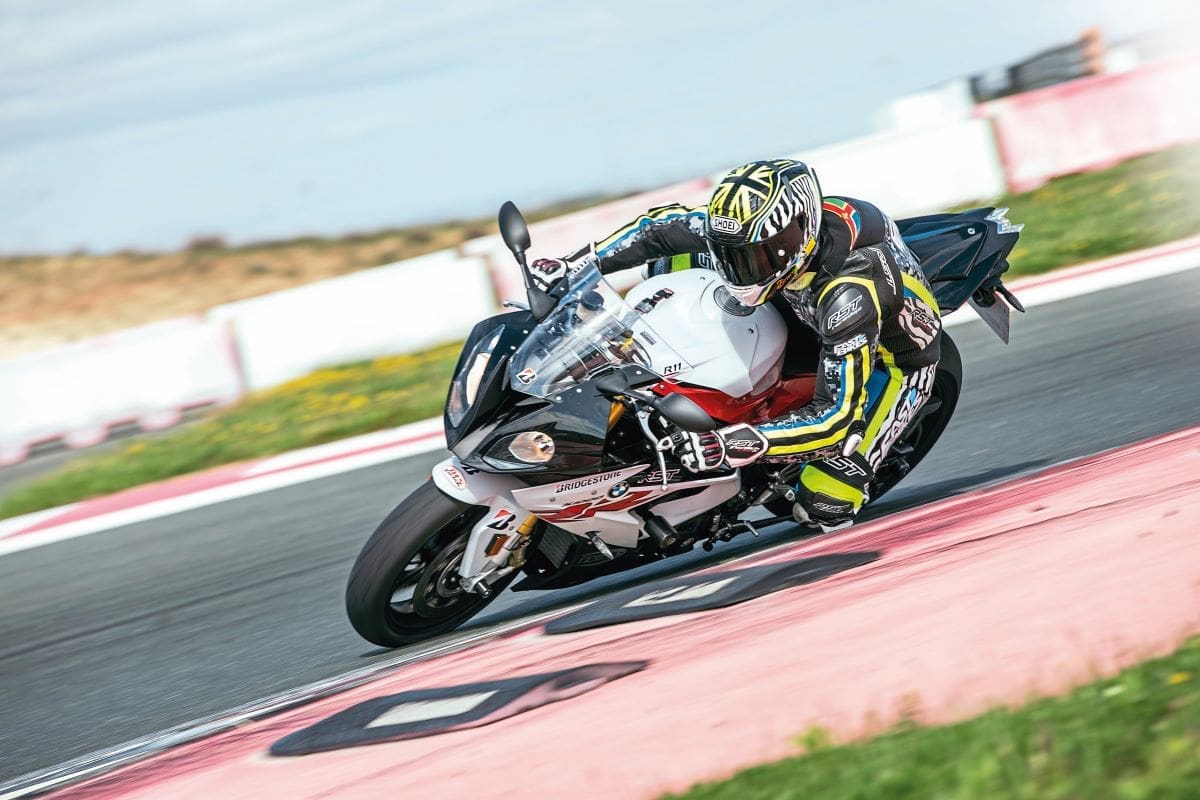
Verdict: 9/10
While remaining blisteringly fast, this generation of RR is pleasingly refined and noticeably more user-friendly for road riders than previous models.
+ Storming motor, great electronics, relaxed nature.
– The look is a bit dated and prices are high.
Also consider these:
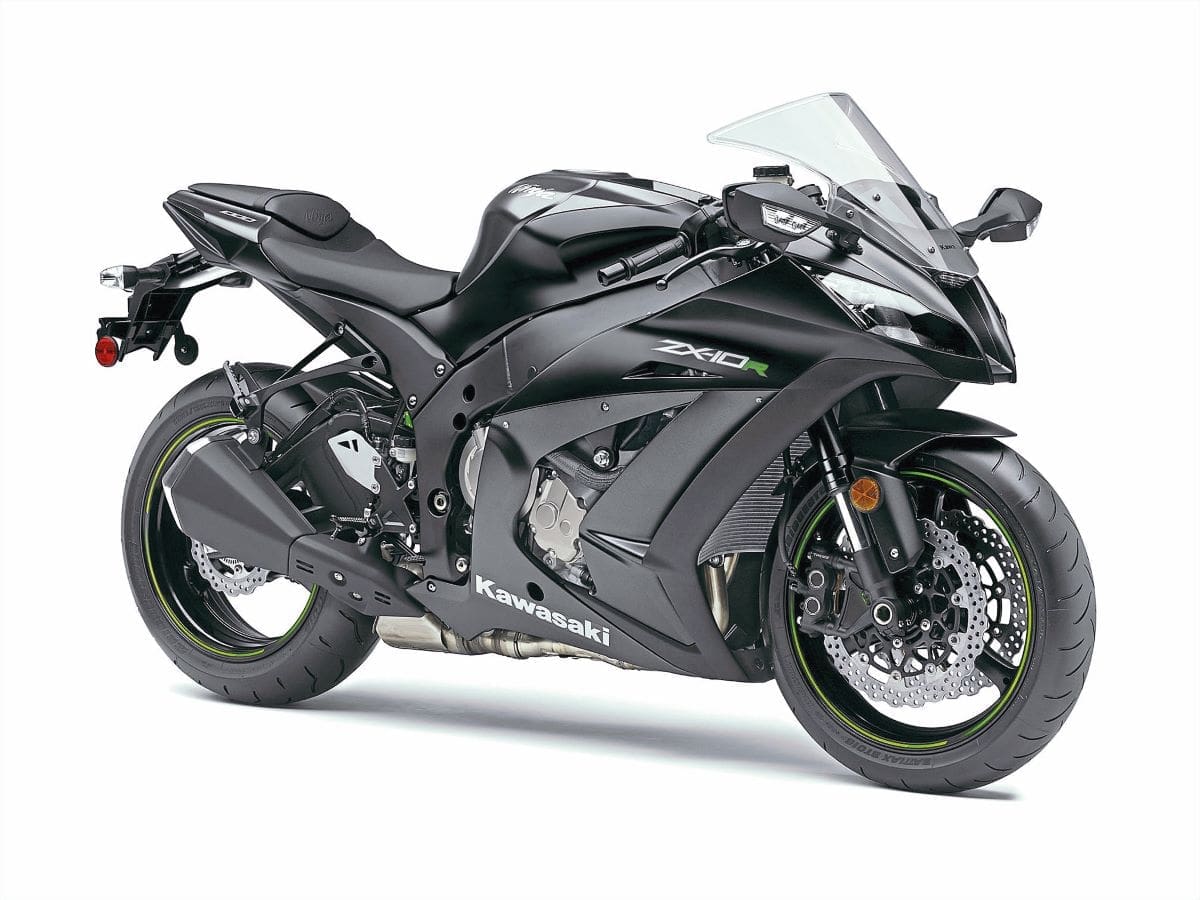
2015 Kawasaki Ninja ZX-10R
Private: £6800 Dealer: £7500
The Ninja delivers a thrilling ride but is quite frustrating on the road due to is all-or-nothing focus. To some that’s its appeal, while to others it is a frustration.
Engine: 998cc, l/c, 16v, inline-four
Power: 175bhp @ 13,000rpm
Torque: 102Nm @ 10,500rpm
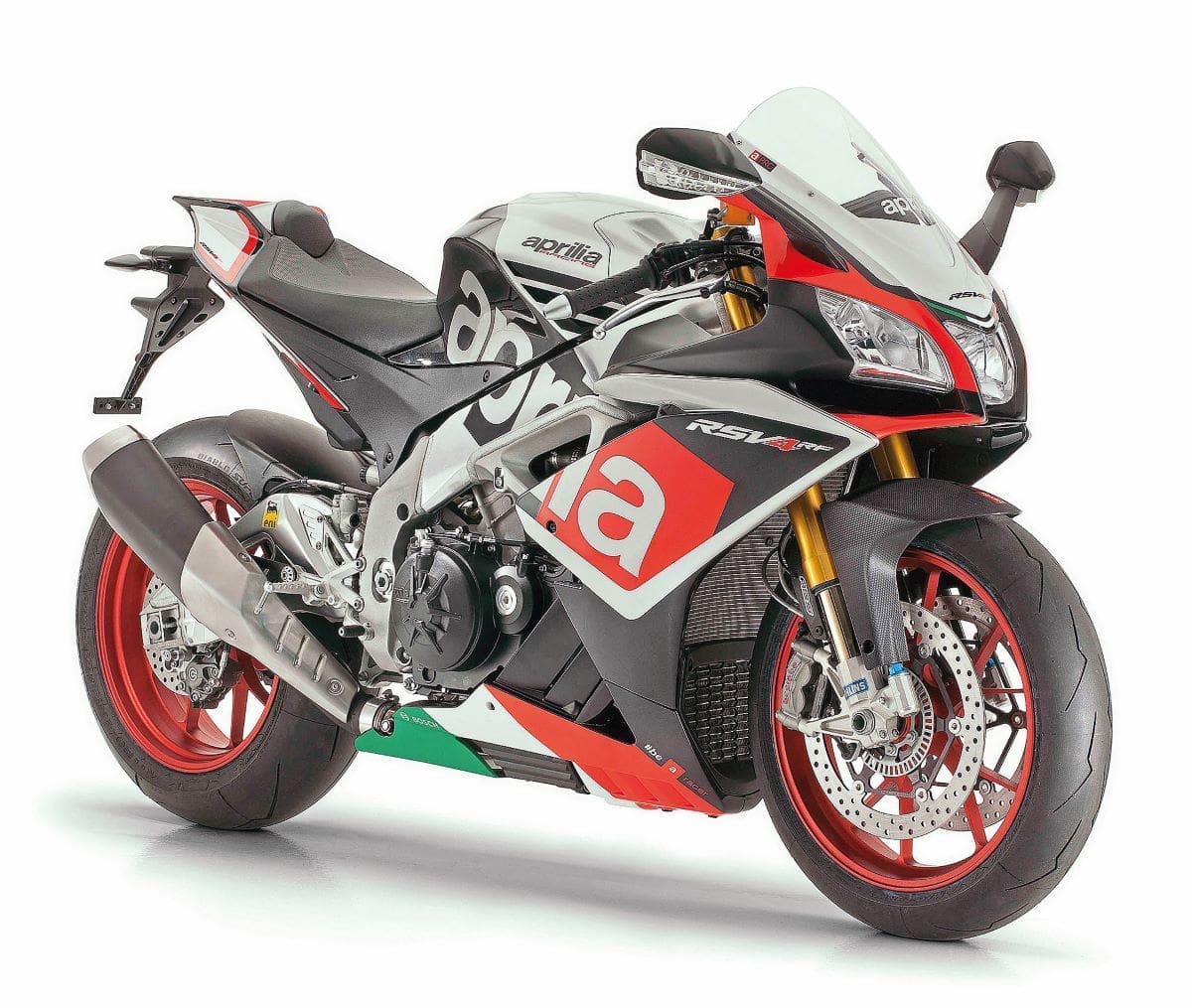
2015 Aprilia RSV4 RF
Private: £8000 Dealer: £9200
The top-spec RSV4 model won FB’s SBOTY in 2015 and is an incredibly potent package. The price is low, but there are concerns over reliability when buying used.
Engine: 999cc, l/c, 16v, V-four
Power: 184bhp @ 13,500rpm
Torque: 107Nm @ 10,000rpm
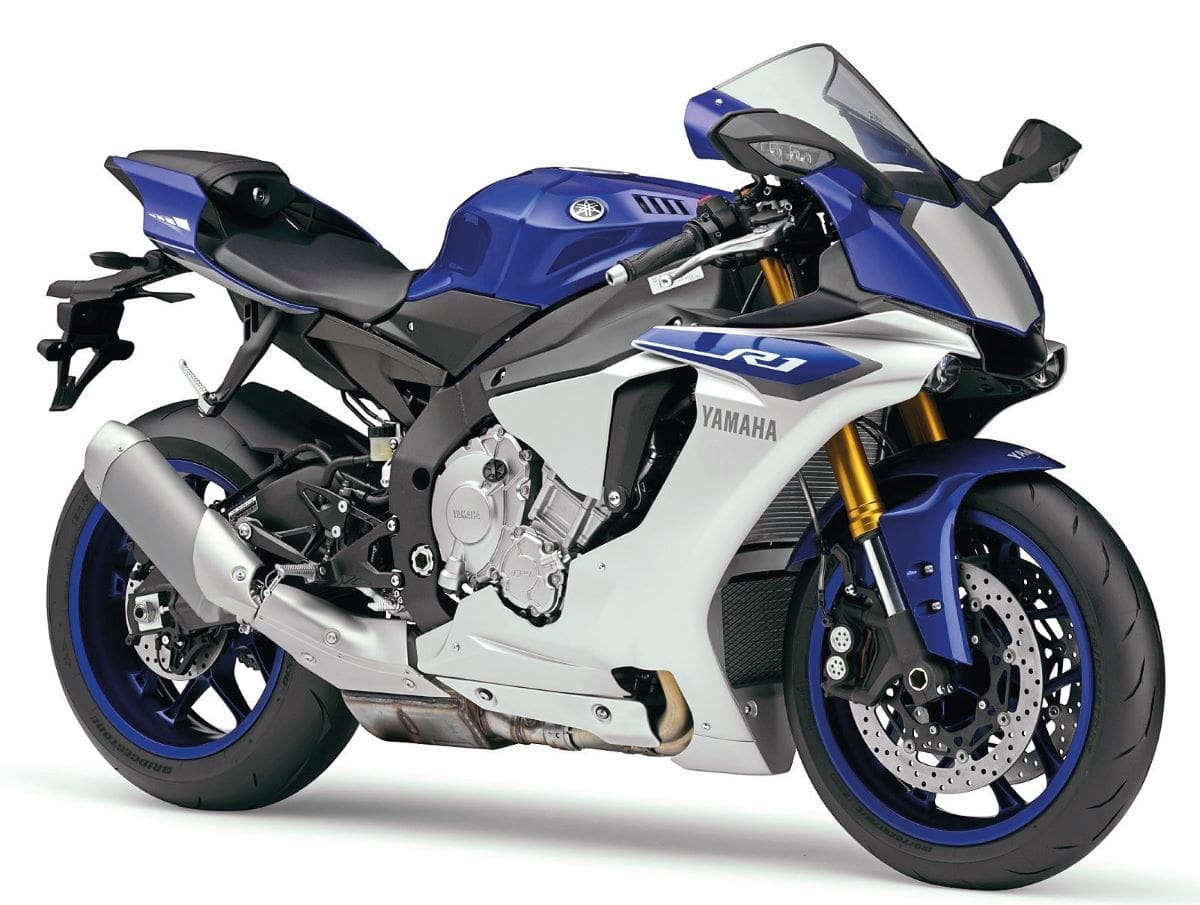
2015 Yamaha YZF-R1
Private: £9000 Dealer: £10,000
The most aggressive R1 to date is loaded with tech and is a serious track weapon. On the road it’s physically small, firm, and a bit too much of a good thing…
Engine: 998cc, l/c, 16v, inline-four
Tested power: 184.2bhp @ 13,750rpm
Tested torque: 107.7Nm @ 8750rpm

